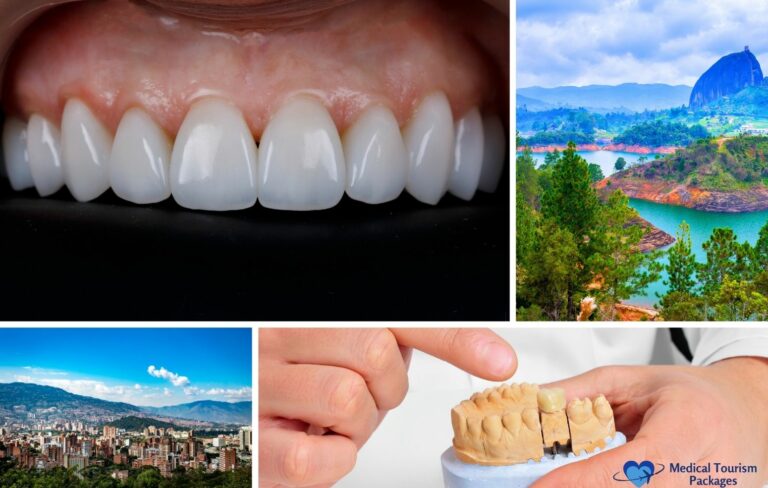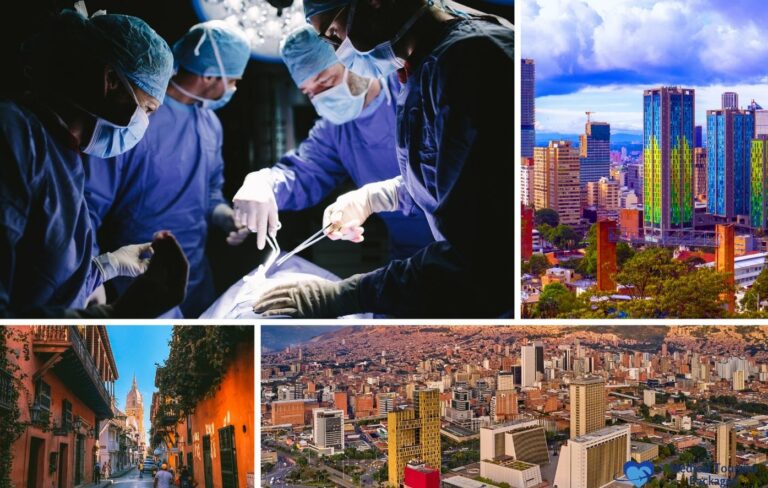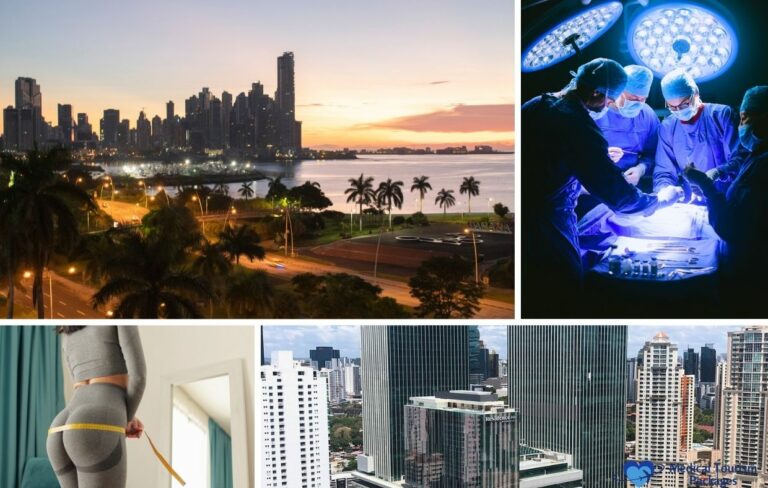Book Appointment Now
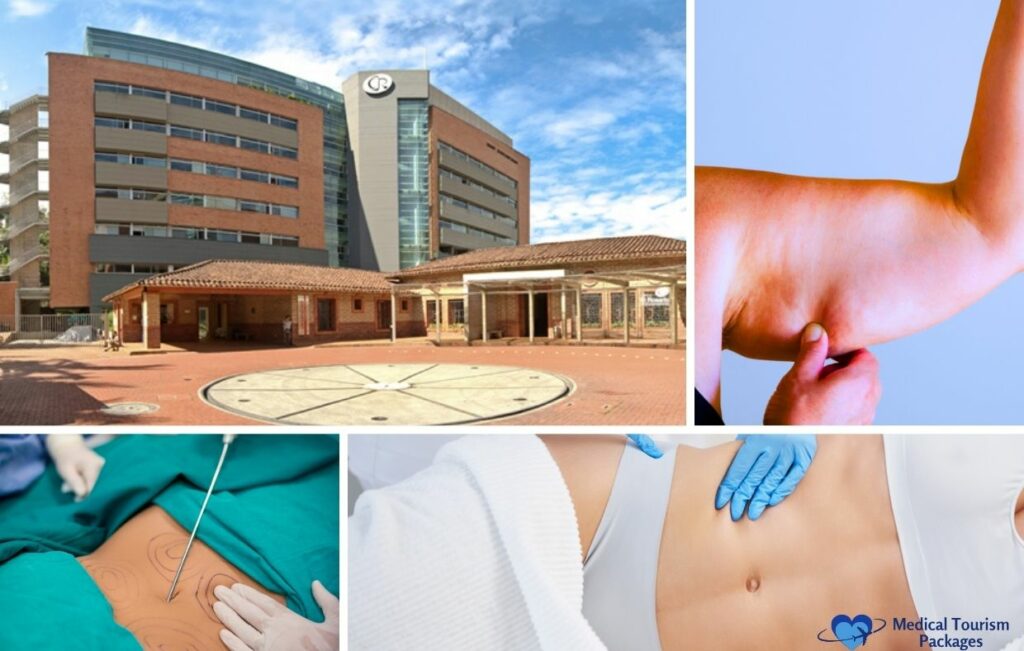
Liposuction in Colombia: The Definitive Guide to Body Contouring
Colombia has become a hotspot for people looking to reshape their bodies through liposuction. The country’s plastic surgeons have earned quite a reputation for their skills, and their modern medical facilities meet strict international standards. Plus, patients can save a ton of money compared to what they’d pay in the US, Canada, or Europe – often 50-70% less for the same procedure.
This guide gives you the latest scoop on getting liposuction in Colombia as of April 2025. We’ll walk you through everything: what the procedure actually involves, the different techniques Colombian doctors use, what it costs, how to pick a good surgeon, what to expect before and after surgery, and some crucial safety info you shouldn’t ignore.
Understanding Liposuction: Reshaping Your Body
Before booking your flight to Bogotá or Medellín, you should know what liposuction actually is and whether it’s right for you.
What Exactly is Liposuction and How Does it Work?
Liposuction (also called lipoplasty or body contouring) surgically removes stubborn fat deposits that sit just beneath your skin. It’s meant to reshape specific areas of your body – not help you lose weight.
Here’s how it works: The surgeon makes tiny incisions near the area being treated. They insert a thin tube called a cannula and move it around to break up the fat cells. Then, they suction out the fat using a vacuum device. Before the procedure, surgeons typically mark the treatment areas and take “before” photos to compare later.
The cool thing about lipo is that it physically removes fat cells from the treated area. Once those cells are gone, they don’t grow back. But – and this is a big but – if you gain weight after surgery, the remaining fat cells can still expand. So maintaining your weight is key to keeping your new shape.
Are You a Good Candidate for Liposuction?
Not everyone should get liposuction. You’ll get the best results if you:
- Are pretty close to your ideal weight (within about 30%, carrying maybe 25-30 extra pounds)
- Struggle with stubborn fat pockets that won’t budge with diet and exercise
- Have a BMI under 30 (though some surgeons will consider 30-35)
- Don’t smoke (or are willing to quit for a while)
- Have good skin elasticity that will “snap back” after fat removal
- Are in decent health without major medical problems
- Have realistic expectations about what lipo can and can’t do
- Are ready to maintain your results with healthy habits afterward
If your skin is too thin or has lost its springiness due to aging, pregnancy, major weight changes, or stretch marks, you might not get the smooth results you’re hoping for. Your surgeon should check your skin quality during your consultation.
Common Body Areas Treated with Liposuction
You can get lipo on lots of different body parts:
- Belly (upper and lower abdomen)
- Waist and “love handles”
- Thighs (inner, outer, and the area under your butt)
- Hips and buttocks
- Back (including those annoying “bra rolls”)
- Arms (especially if you hate that “batwing” look)
- Neck and chin (to get rid of a double chin)
- Face and cheeks
- Male chest (for guys with “man boobs”)
- Inner knees
- Calves and ankles (sometimes called “cankles”)
Some people get lipo by itself, while others combine it with procedures like tummy tucks, facelifts, or breast reductions – especially if loose skin is also an issue.
Liposuction vs. Weight Loss: Understanding the Difference
A lot of people mix these up, but they’re totally different.
When you lose weight through diet and exercise, your existing fat cells shrink all over your body. But the number of fat cells stays the same, and your body’s natural fat distribution pattern doesn’t change. That’s why many people still have stubborn fat pockets in certain areas even when they’re at a healthy weight.
Liposuction, on the other hand, actually removes fat cells from specific areas. It doesn’t cause significant weight loss (maybe just a few pounds), but it changes your body’s shape by reducing the number of fat cells in the treated spots.
So lipo works best for people who are already close to their target weight but want to refine certain areas. It’s not a substitute for diet and exercise – it’s more like the finishing touch.
Exploring Advanced Liposuction Techniques in Colombia
Colombian plastic surgeons offer several liposuction methods. Understanding the differences can help you choose what’s right for you.
Traditional Tumescent Liposuction
This is the most common type. Before suctioning begins, the surgeon injects a special solution (saline, lidocaine for numbing, and epinephrine to reduce bleeding) into the fat layer. This makes the area swell up and firm, making the fat easier to remove.
Pros: Well-established technique that works well for removing larger amounts of fat, with much less bleeding than older methods.
Cons: Because the surgeon has to manually move the cannula back and forth, it can cause more tissue trauma, leading to more bruising and swelling. Recovery might take longer than with newer techniques.
VASER Lipo: Ultrasound Technology for Precise Fat Removal
VASER (Vibration Amplification of Sound Energy at Resonance) uses ultrasound waves to break down fat cells before they’re suctioned out. The ultrasound energy can target fat while sparing surrounding tissues like nerves and blood vessels.
Pros: More precise, especially for detailed body sculpting like creating visible abs. Often causes less pain, bleeding, and bruising, so recovery can be faster. The heat generated may also help tighten skin a bit. Works well for fibrous areas like the back or male chest.
Cons: Usually costs more than traditional lipo. The procedure takes longer, and there’s a small risk of burns if not done correctly.
Power-Assisted Liposuction (PAL): Enhancing Efficiency
PAL uses a cannula with a motorized tip that vibrates rapidly, making it easier to break up fat. This reduces the physical effort the surgeon needs to use.
Pros: Faster and more efficient fat removal, especially for large areas or dense, fibrous tissue. Less surgeon fatigue means potentially better precision. Often causes less trauma to surrounding tissues, so you might have less pain and swelling.
Cons: Still might cause more tissue disruption than VASER. Doesn’t offer much skin tightening. Might not be as precise for very detailed sculpting.
Laser-Assisted Lipolysis (SmartLipo) – Availability & Benefits in Colombia
Laser-Assisted Lipolysis delivers laser energy through a thin fiber to liquefy fat cells before they’re suctioned out. The laser also seals small blood vessels and can stimulate collagen production in the skin.

Pros: Requires very small incisions, so scarring is minimal. May help tighten skin, which is great if you have mild to moderate skin laxity. Usually causes less bleeding, bruising, and swelling. Can be done under local anesthesia in many cases. Works well for smaller, delicate areas like the neck and arms.
Cons: Best for smaller fat deposits, not large-volume removal. Risk of burns if not done correctly. Limited effect on cellulite.
Lipo 360: Comprehensive Circumferential Sculpting Explained
Lipo 360 isn’t a specific technology but an approach to body contouring. It treats your entire midsection – abdomen, love handles, and back – all in one session, for a more balanced look from all angles.
Pros: Creates a more complete transformation of your torso, enhancing overall body harmony.
Cons: More extensive than single-area lipo, so expect longer surgery time, potentially more involved recovery, and higher cost.
Specialized Technologies: The Case of AirSculpt in Colombia
You might come across the name AirSculpt® in your research. This is a patented, heavily marketed procedure developed by Dr. Aaron Rollins and offered exclusively through Elite Body Sculpture clinics. It claims to “pluck fat cell by cell” without scalpels, stitches, or needles while you’re awake, with minimal downtime.
Is Airsculpt available in Colombia?:
Official AirSculpt® procedures aren’t available in Colombia as of April 2025. The treatment is only offered at Elite Body Sculpture centers, mostly in the US with a few in Canada and Europe. No official locations exist in Colombia.
Be careful – some Colombian clinics might advertise procedures as “similar to AirSculpt” or use comparable marketing language. They might use advanced technologies like laser or ultrasound-assisted liposuction to achieve similar results, but these aren’t the patented AirSculpt® treatment.
When exploring newer lipo technologies, focus more on the surgeon’s qualifications (SCCP certification), their experience with the proposed technology, and their track record, rather than chasing a specific brand name.
Why Choose Colombia for Your Liposuction Procedure?
Colombia has become a top destination for liposuction for several compelling reasons.
The Expertise of Colombian Board-Certified Plastic Surgeons
Colombian plastic surgeons are known for their extensive training, technical skill, and vast experience with aesthetic procedures. Many have trained internationally and brought advanced techniques back to Colombia.
Look for certification by the Colombian Society of Plastic, Aesthetic and Reconstructive Surgery (SCCP). This is the Colombian equivalent of board certification in the US, signifying that a surgeon has met demanding training and competence requirements. Checking a surgeon’s SCCP membership is essential for ensuring quality and safety.
High Standards of Care in Accredited Clinics and Hospitals
Colombia has modern clinics with state-of-the-art technology and high standards of patient care. For extra assurance, look for facilities with Joint Commission International (JCI) accreditation, which means they meet rigorous international standards.
This emphasis on certification and accreditation is crucial for your safety. While Colombia offers excellent medical care, unregulated “garage clinics” unfortunately exist and pose significant risks. Always verify both surgeon credentials (SCCP) and facility accreditation.
The Significant Cost Advantage: Lipo Prices Compared
One of the biggest draws is the cost savings. Procedures in Colombia typically cost 50-70% less than equivalent procedures in the US, Canada, or Western Europe. For example, standard liposuction might range from $2,000 to $4,500 USD in Colombia, compared to $5,000 to $10,000 USD or more elsewhere.
These lower prices stem from Colombia’s lower cost of living, reduced operational expenses, and often favorable currency exchange rates. But remember – don’t pick a provider solely based on the lowest price. Unusually low costs might signal compromises in surgeon experience, facility standards, or post-op care.
The Appeal of Medical Tourism in Colombia
Cities like Medellín, Bogotá, and Cali have become leading medical tourism hubs in South America. They’re generally accessible via international flights and offer modern infrastructure.
Many clinics cater specifically to international patients, providing English-speaking staff, help with travel logistics and accommodations (including specialized recovery houses with nursing support), airport transfers, and sometimes local tours. Plus, the pleasant climate makes recovery more comfortable for many patients.
Cost: Liposuction Prices in Colombia (April 2025 Estimates)
While significantly cheaper than in Western countries, understanding the potential costs requires looking at price ranges and influencing factors. These figures reflect estimates as of early 2025.
Average Cost of Liposuction per Area in Colombia
- General Liposuction (per major area like abdomen, thighs, back): $2,000 – $4,500 USD (approx. 8-18 million COP)
- Mini Liposuction (per small area like chin, inner knees): $600 – $1,200 USD (approx. 2.5-5 million COP)
- Arms: $1,500 – $3,000 USD (approx. 6-12 million COP)
- Abdomen: $2,000 – $4,000 USD (approx. 8-16 million COP)
- Thighs: $2,000 – $4,000 USD (approx. 8-16 million COP)
- Back: $2,000 – $4,000 USD (approx. 8-16 million COP)
- Neck/Chin: $1,500 – $3,000 USD (approx. 6-12 million COP)
Advanced techniques often cost more:
- VASER Lipo: $3,500 – $6,500 USD (approx. 14-26 million COP)
- PAL Lipo: $3,000 – $5,500 USD (approx. 12-22 million COP)
- Laser Lipo/SmartLipo: $3,000 – $5,500 USD (approx. 12-22 million COP)
- Lipo 360 (Midsection): $3,000 – $6,000 USD (approx. 12-24 million COP)
Estimated Costs Table (Current Estimates)
| Procedure / Area | Est. Cost (USD) | Est. Cost (COP) | Area |
|---|---|---|---|
| General Lipo (per major area) | $2,000 – $4,500 | 8M – 18M | e.g., Abdomen, Thighs, Back |
| Mini Lipo (per small area) | $600 – $1,200 | 2.5M – 5M | e.g., Chin, Knees |
| Arms Lipo | $1,500 – $3,000 | 6M – 12M | Cost per pair |
| Neck/Chin Lipo | $1,500 – $3,000 | 6M – 12M | Neck + Chin |
| VASER Lipo (general) | $3,500 – $6,500 | 14M – 26M | Technology may increase cost |
| PAL Lipo (general) | $3,000 – $5,500 | 12M – 22M | |
| Laser Lipo / SmartLipo (general) | $3,000 – $5,500 | 12M – 22M | Technology may increase cost |
| Lipo 360 (Midsection) | $3,000 – $6,000 | 12M – 24M | Comprehensive circumferential treatment |
Factors That Influence Your Final Liposuction Bill
Your final cost depends on many factors:
- Surgeon’s expertise (more experienced surgeons usually charge more)
- Clinic location and reputation (costs may be higher in major cities)
- Procedure complexity (number of areas, size, amount of fat, your anatomy)
- Technique used (advanced technologies like VASER or Laser Lipo cost more)
- Type of anesthesia
- Operating room and facility fees
- Pre-op tests and consultations
- Post-op supplies (compression garments, medications)
- Whether the price includes extras like accommodation or transportation
Always ask for a detailed breakdown of what’s included in the quoted price.
Understanding Liposuction Packages and Inclusions
Many Colombian clinics offer package deals for international patients. A standard surgical package might include:
- Initial consultations
- Surgeon’s and anesthesiologist’s fees
- Operating room and facility fees
- Standard pre-op lab tests
- Initial post-op medications
- One or more compression garments
- Follow-up visits while in Colombia
More comprehensive packages might add:
- Accommodation at a hotel or recovery house
- Airport transfers
- Local transportation to appointments
- Post-op nursing care
- Meals during recovery
- Translation services
Always get written confirmation of exactly what’s included in the package and what’s not.
Finding Your Specialist: Selecting the Best Liposuction Surgeon in Colombia
Choosing the right surgeon is probably the most important decision for a successful and safe liposuction experience.
Essential Credentials and Board Certifications to Verify
The main credential to look for is certification by the Colombian Society of Plastic, Aesthetic and Reconstructive Surgery (SCCP). This is like board certification in the US and indicates specialized training and ethical practice.
You can check a surgeon’s SCCP status by:
- Looking them up in the official SCCP directory (www.cirugiaplastica.org.co)
- Asking the surgeon or clinic for proof of current SCCP membership
- Checking the local Secretary of Health website
Some Colombian surgeons may also have international affiliations, like membership in the American Society of Plastic Surgeons (ASPS).
Avoid practitioners who aren’t certified plastic surgeons. Choosing uncertified doctors, even if they’re cheaper, significantly increases your risk of complications.
How to Research Surgeons: Reviews, Photo Galleries, and Reputation
Beyond checking credentials, thoroughly research the surgeon’s track record:
- Read patient reviews on independent medical tourism forums, review sites like RealSelf, and social media groups. Look for consistent themes, but be somewhat skeptical.
- Examine their before-and-after photos, especially cases similar to yours. Look for natural-looking results and minimal scarring.
- Ask about their specific experience with the technique you’re considering and the areas you want treated.
- Look for signs of professional engagement, like publications or conference presentations.
Reputable medical tourism agencies often have established relationships with vetted surgeons and can help with selection, but still do your own verification.
The Importance of the Consultation Process
The consultation is crucial for both you and the surgeon. For international patients, it usually starts with a virtual consultation, where you submit medical history forms and photos and have video calls with the surgeon or their team.
When you arrive in Colombia (typically a few days before surgery), you’ll have an in-person consultation for a physical examination, final questions, and informed consent.
Use this opportunity to evaluate the surgeon’s professionalism, communication style, and honesty. Feel empowered to ask questions until you’re fully satisfied. If a surgeon rushes you, dismisses concerns, or makes unrealistic promises, that’s a red flag.
Key Questions to Ask During Your Lipo Consultation
Come prepared with questions like:
Credentials & Experience:
- Are you certified by the SCCP? Can I see verification?
- How many years have you been performing liposuction?
- How many procedures like mine do you do each year?
Results & Planning:
- Am I a good candidate for liposuction? Why or why not?
- Which technique do you recommend for me, and why?
- Can I see before-and-after photos of similar patients?
- What results can I realistically expect?
Procedure & Facility:
- Where will the surgery be performed?
- Is the facility accredited?
- What type of anesthesia will be used, and who will administer it?
Risks & Safety:
- What are the specific risks in my case?
- How do you handle complications, both while I’m in Colombia and after I return home?
Recovery & Follow-Up:
- What does recovery involve? When can I return to normal activities?
- What post-op care instructions will I need to follow?
- How many follow-up appointments will I need in Colombia?
- What happens after I return home?
Cost & Logistics:
- What’s the total cost, and what’s included?
- What payment methods do you accept?
Liposuction Planning, Procedure, and Recovery
Undergoing liposuction in Colombia involves careful planning and understanding what to expect.
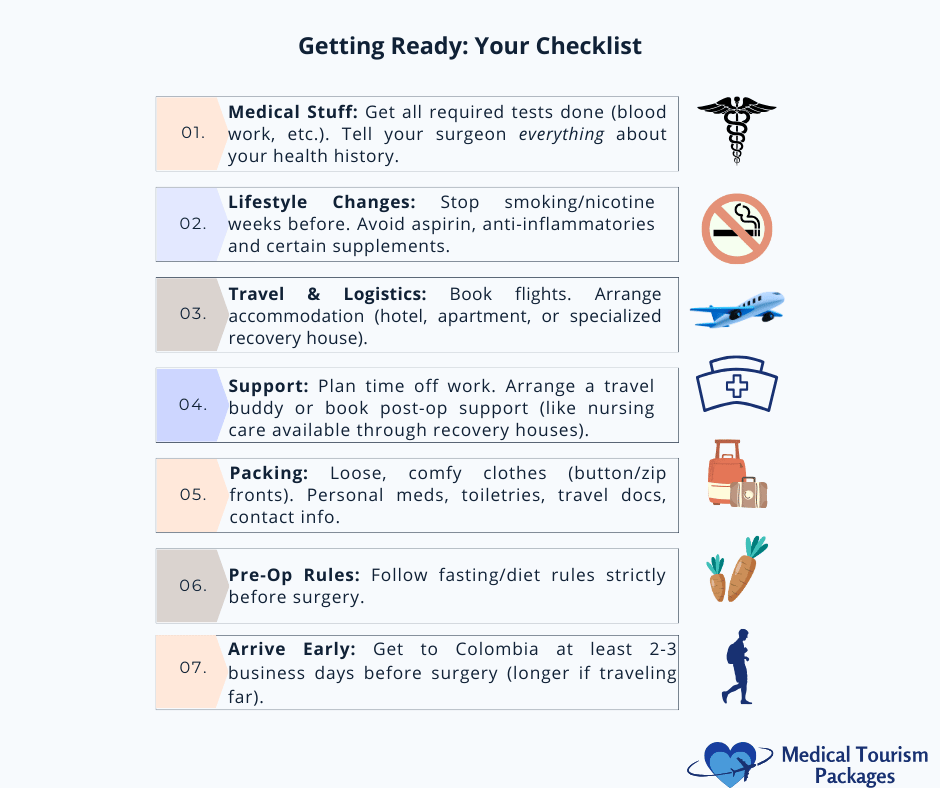
Preparing for Liposuction Surgery Abroad: A Checklist
- Complete pre-op tests as requested by your surgeon
- Stop smoking and using nicotine products several weeks before surgery
- Avoid aspirin, anti-inflammatory drugs, and certain supplements that can increase bleeding
- Book flights well in advance
- Arrange accommodation (hotel, apartment, or recovery house)
- Plan for adequate time off work
- Arrange for a companion or post-op nursing services
- Pack loose, comfortable clothing
- Confirm payment methods and ensure you have access to necessary funds
- Follow pre-op dietary instructions
- Plan to arrive in Colombia at least 2-3 business days before surgery
What Happens on the Day of Your Liposuction?
On surgery day:
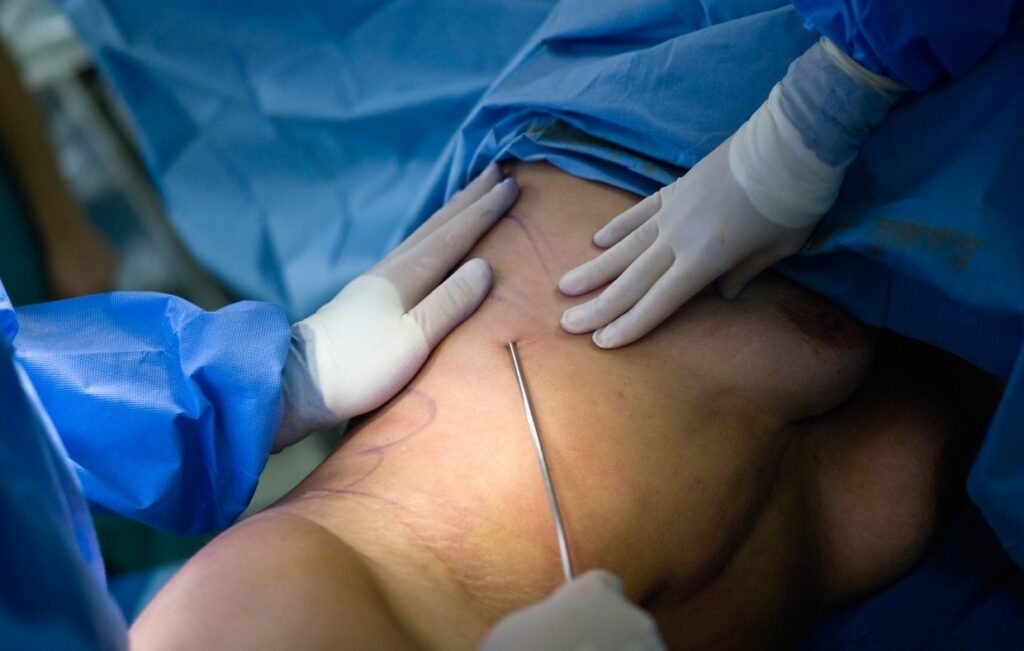
- You’ll arrive at the clinic and complete final paperwork
- Change into a surgical gown and meet with the surgical team
- The surgeon will mark the treatment areas on your body
- You’ll receive anesthesia (local, IV sedation, or general, depending on your procedure)
- The surgeon will make small incisions, inject tumescent fluid if using that technique, and insert the appropriate cannula to break up and suction out fat
- After fat removal, the incisions may be closed with tiny sutures or left partially open for drainage
- Absorbent pads and sterile dressings will be applied
- You’ll be fitted with a compression garment
- After recovery from anesthesia, you’ll typically be released to your accommodation, accompanied by a caregiver
The Liposuction Recovery Timeline: What to Expect Week by Week
Days 1-3: Expect significant discomfort, swelling, bruising, and leakage of pinkish fluid from incision sites. Rest is crucial, though short, gentle walks are encouraged after the first day or two. Keep your compression garment on as instructed.
Week 1: Drainage typically stops. Swelling usually peaks around day 2-3 and may start to decrease, though it remains significant. Pain should lessen. Continue wearing the compression garment 24/7. Light walking is encouraged.
Week 2: Swelling and bruising continue to improve but are still noticeable. The treated areas might feel firm or lumpy – this is normal. Most people can return to non-strenuous work, but strenuous exercise and heavy lifting remain off-limits.
Weeks 3-4: More noticeable reduction in swelling and bruising, revealing more of your new contours. Most soreness should be gone. Moderate exercise may be gradually reintroduced. Compression garment wear might be reduced.
Months 2-3: Swelling continues to subside, and firmness in treated areas softens. Body contours become more defined. Most patients can resume all normal activities.
Months 3-6+: Final results become fully apparent as the last traces of swelling resolve and the skin settles into its final position.
Recovery Timeline table
| Timeframe | Key Symptoms | Activity Level | Compression Garment | Typical Milestones |
|---|---|---|---|---|
| Day 1-3 | Peak pain, swelling, bruising, drainage | Rest initially, then very light walking | 24/7, High compression | Manage pain, manage drainage |
| Week 1 | Drainage stops, swelling high, pain lessens | Light walking encouraged, avoid exertion | 24/7 | Showering may start, possible return to desk work |
| Week 2 | Swelling/bruising improving, firmness/lumps | Increase light activity, no heavy lifting | 24/7 or transition stage | Return to most non-strenuous work |
| Wk 3-4 | Swelling reduced, bruising fading, soreness gone | Gradual return to moderate exercise | Reduced wear possible | Initial results more visible, feeling better |
| Mo 2-3 | Swelling continues down, firmness softens | Resume most/all normal activities & exercise | Usually discontinued | Contours refining |
| Mo 6+ | Residual swelling resolved, skin settled | Full activity | None | Final results apparent |
Managing Post-Op Care: Compression Garments, Drainage, Activity
Compression Garments: These control swelling, provide support, help skin conform to new contours, and improve comfort. Wear them exactly as directed by your surgeon.
Drainage Management: Expect some fluid leakage for the first 24-72 hours. Absorbent pads will need regular changing.
Activity Progression: Gentle walking should begin within 24-48 hours to promote circulation and prevent blood clots. Gradually increase activity, but avoid strenuous activities for 4-6 weeks or until cleared by your surgeon.
Other Important Care: Stay hydrated, eat a healthy diet, properly care for incision sites, and only take medications approved by your surgeon. Many Colombian surgeons recommend lymphatic drainage massages to help reduce swelling.
Follow-Up Appointments and Monitoring While in Colombia
You’ll typically have at least one or two check-ups within the first 1-2 weeks after surgery. These allow the surgeon to monitor healing, assess swelling and bruising, check for signs of infection or complications, remove sutures if needed, and provide guidance on continued recovery.
This is why it’s important to stay in Colombia for the recommended post-operative period before flying home.
Safety First: Risks and Considerations for Liposuction in Colombia
While liposuction by qualified surgeons in accredited facilities is generally safe, it does carry risks.
Understanding the Potential Risks Associated with Liposuction
Common or Minor Risks:
- Bruising and swelling
- Pain and soreness
- Temporary numbness or altered sensation
- Contour irregularities (lumpiness, waviness, asymmetry)
- Small scars
- Fluid collection under the skin (seroma)
Serious but Rare Risks:
- Infection
- Blood collection under the skin (hematoma)
- Excessive bleeding
- Fat embolism (fat entering the bloodstream)
- Blood clots in the legs (DVT) or lungs (pulmonary embolism)
- Internal organ damage
- Anesthesia complications
- Lidocaine toxicity
- Skin tissue death
- Fluid imbalance or shock
- Need for revision surgery
Minimizing Risks: Choosing Qualified Surgeons and Accredited Facilities
The most effective way to minimize risks is through careful selection of your provider and facility:
- Choose an SCCP-certified surgeon with extensive experience
- Select a clinic or hospital accredited by JCI or certified by local health authorities
- Ensure you’re a suitable candidate through thorough pre-op evaluation
Important Safety Tips for Medical Tourists
- Research extensively beyond marketing materials
- Verify credentials independently
- Ensure you can communicate effectively with your surgeon
- Be completely honest about your medical history
- Plan adequate recovery time before flying home
- Travel with a companion or book accommodation with nursing care
- Consider insurance coverage for complications
- Know emergency procedures and contact information
- Follow all pre- and post-operative instructions meticulously
Is Liposuction in Colombia the Right Path for You?
Colombia offers skilled surgeons, modern facilities, significant cost savings, and a well-established medical tourism infrastructure. However, the decision requires careful consideration.
Remember that liposuction is for body contouring, not weight loss. Results depend on being a good candidate, especially regarding skin elasticity, and maintaining a stable weight afterward. Recovery involves downtime and following specific instructions.
Most importantly, safety must be your top priority. This means thoroughly vetting surgeons (ensuring SCCP certification) and facilities (looking for proper accreditation). Never prioritize cost over quality and safety.
Whether liposuction in Colombia is right for you depends on your specific goals, health, budget, risk tolerance, and willingness to do the necessary research. By carefully weighing the benefits against the considerations, you can make an informed decision about pursuing your desired body contouring results.
Frequently Asked Questions about Liposuction in Colombia
How much fat can safely be removed during liposuction?
Safety guidelines generally recommend a maximum of 5 liters of total aspirate (fat, fluid, and blood) for outpatient procedures. This roughly equals about 11 pounds of weight, though the actual amount of pure fat removed is often less. Removing larger volumes increases risks and should be done in a hospital setting with overnight monitoring capabilities.
How long does swelling last after liposuction?
Swelling peaks within the first 48-72 hours. A significant portion subsides within 4-6 weeks (perhaps 60% by the six-week mark). However, residual swelling can linger for 3-6 months or even up to a year before final results are visible.
Are the results of liposuction permanent?
Yes, in the sense that removed fat cells don’t grow back. However, if you gain significant weight after lipo, the remaining fat cells can enlarge, potentially altering your results. Natural aging and hormonal changes can also affect body shape over time.
What is the typical downtime or recovery time after liposuction in Colombia?
Initial rest: 2-5 days Return to desk jobs: About 1 week Return to physically demanding jobs: 2+ weeks Light exercise: 1-2 weeks Strenuous activity: 4-6 weeks Full results: 3-6 months as swelling resolves
Can liposuction treat cellulite or tighten loose skin?
Cellulite: Traditional liposuction is generally not effective for cellulite and might sometimes make it appear more noticeable. It should not be considered a primary treatment for this condition, which is characterized by the dimpled or lumpy appearance of skin caused by fat deposits pushing through underlying connective tissue. While various other treatments exist, including laser therapy, radiofrequency, acoustic wave therapy, subcision (severing the connective bands), and topical creams, their effectiveness can vary, and results may not be permanent.
Loose Skin: Standard liposuction techniques primarily remove fat and do not significantly tighten loose skin; removal of underlying fat can sometimes make laxity more apparent. Energy-based techniques (Laser, VASER) may induce modest skin tightening, but the effect varies. Patients with significant skin laxity often require additional surgical procedures (e.g., tummy tuck, arm lift) for a smooth contour. Good pre-existing skin elasticity is the best predictor of smooth results after liposuction alone.
How long do I need to stay in Colombia after my procedure?
Follow your specific surgeon’s recommendation. Generally:
- Standard Lipo (1-3 areas): Approximately 7 to 12 days post-operatively is commonly recommended.
- Lipo 360 / Multiple Areas: A longer stay of 10 to 15 days or potentially longer might be advised.
- Pre-Operative Arrival: Plan to arrive 2-3 days before the surgery date.
This stay allows for essential monitoring, follow-up appointments, and ensuring you’re fit to travel home safely. Never leave earlier than your surgeon recommends.

